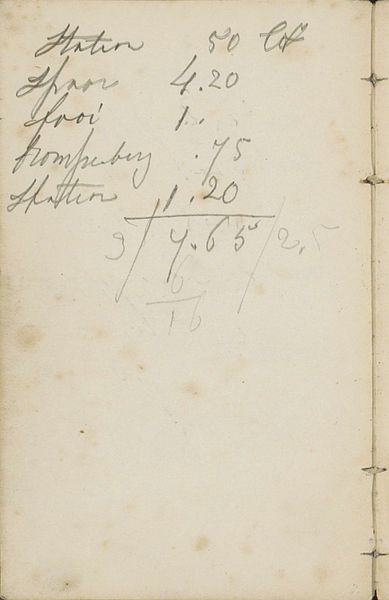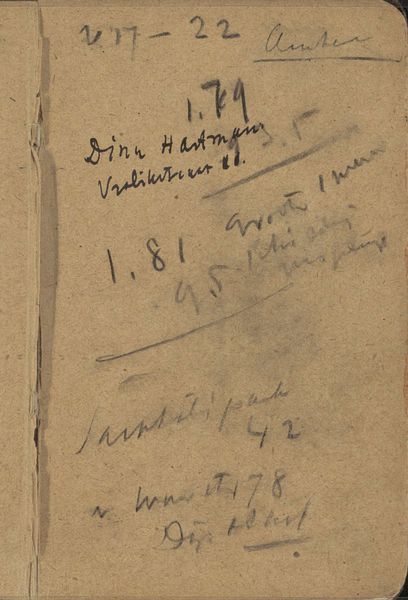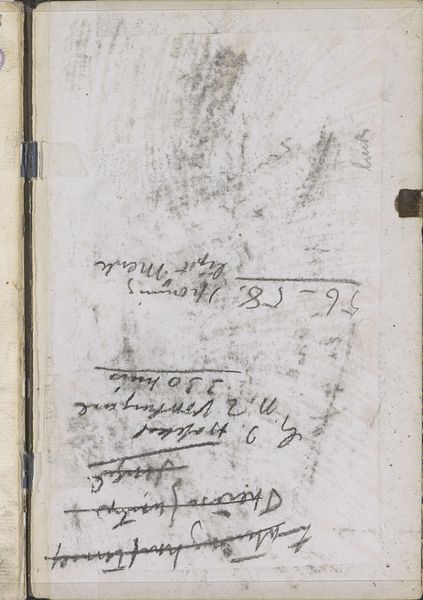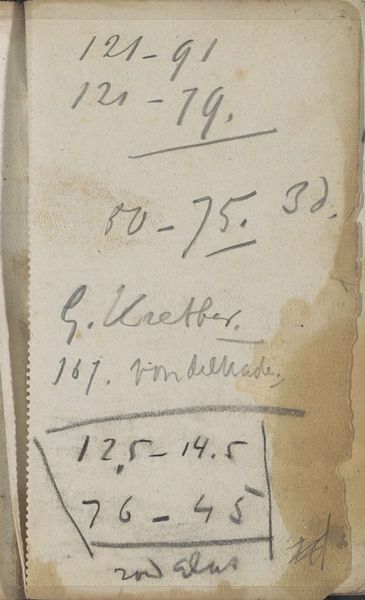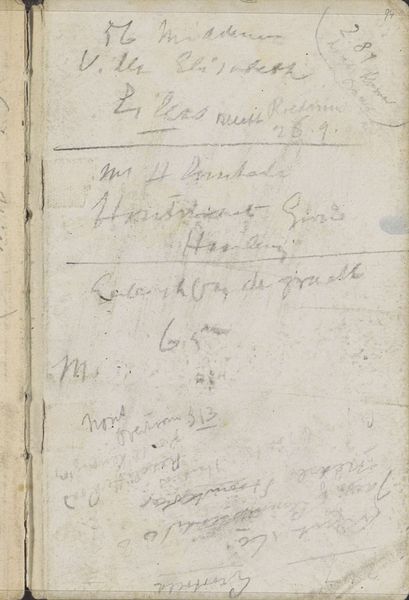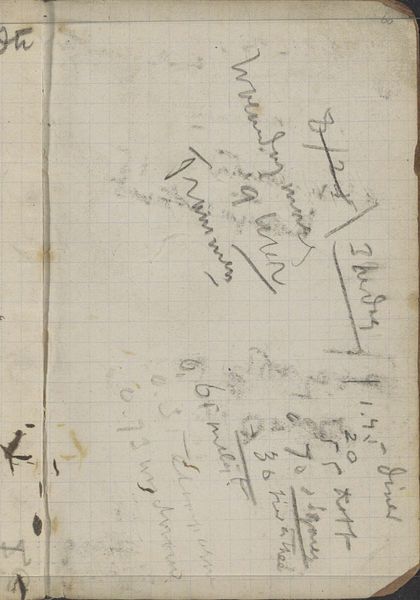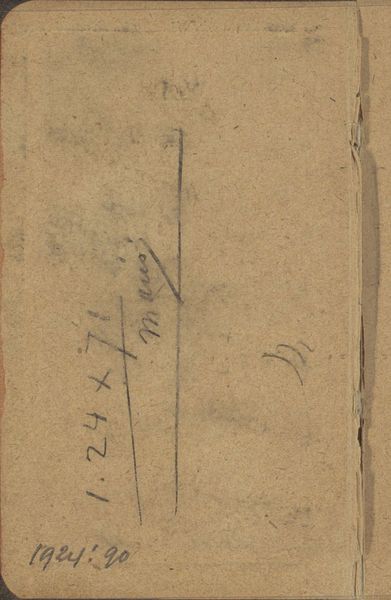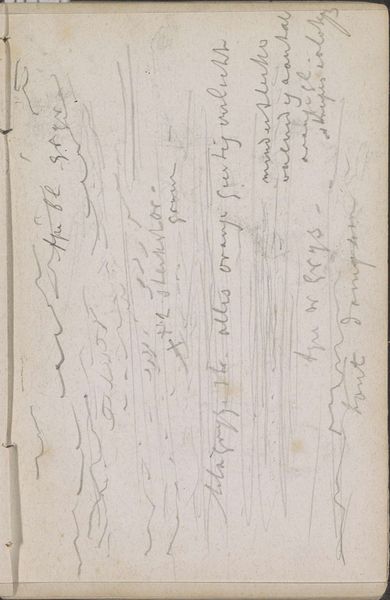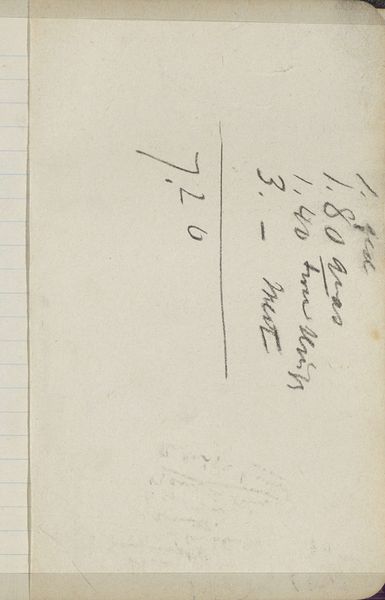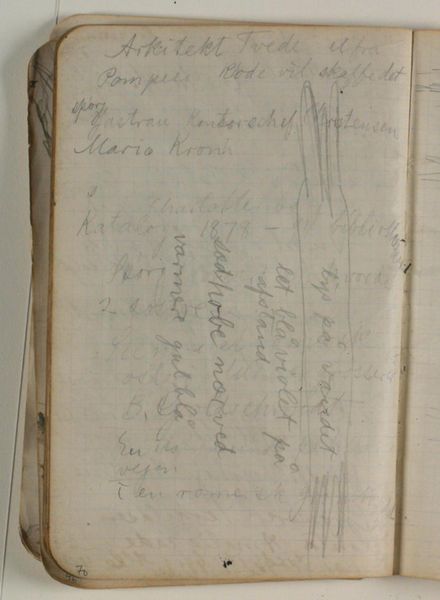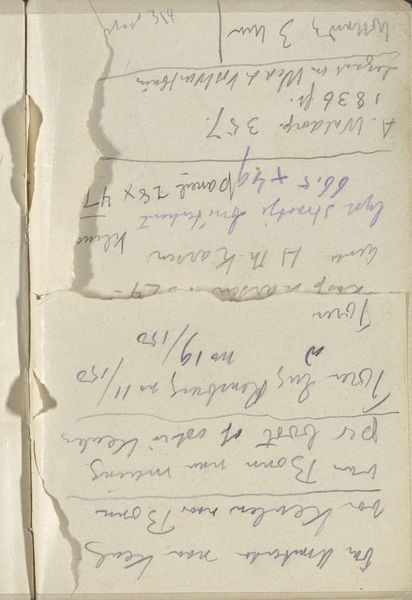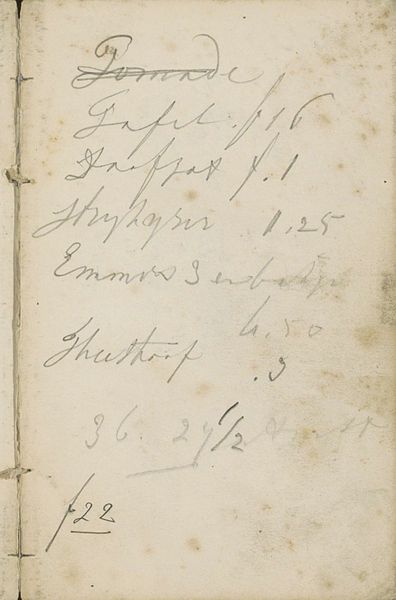
drawing, paper, pencil
#
portrait
#
drawing
#
hand written
#
hand-lettering
#
hand lettering
#
paper
#
personal sketchbook
#
pencil
#
sketchbook drawing
Copyright: Rijks Museum: Open Domain
Curator: Here we have a page titled "Signatuur, adres en notitie" plucked from the sketchbooks of Jan Willem van Borselen, dating from approximately 1868 to 1878. It's done in pencil on paper, a peek into the artist’s daily life, housed here at the Rijksmuseum. Editor: Immediately, what strikes me is the sheer intimacy. It’s a whisper of numbers and notations, light pencil strokes on what looks like faintly lined paper. You can almost smell the musty paper. I'd guess a private notebook, something for just the artist’s eyes. Curator: Exactly. Think about the paper itself – probably a mass-produced ledger or account book, fairly commonplace at the time. Borselen reclaims it for his own artistic purposes, blurring the lines between utility and creativity. I bet he never thought it would wind up here. Editor: The materiality, though—it’s a fascinating contradiction. Delicate pencil marks documenting, perhaps, banal everyday transactions. Yet, the very act of writing, of marking, elevates the ordinary. Those ruled lines seem to grid the artist's interior thoughts too. What can you infer from the page’s composition? Curator: It feels…unresolved. Like thoughts caught mid-stream. The signature up top, the list of numbers – is it a shopping list? Perhaps notes from a day out painting in the fields around The Hague? I like to imagine he's costing out prices to sell his art! Editor: Or maybe he was jotting down sizes of his canvases? Look, consider how these notebooks were cheaply produced, then reflect on the luxury art trade, where Borselen might have encountered his clientele. This small document has to do with economic history! Curator: Indeed, that contrast enriches it. It reminds me how every artwork is enmeshed in this web of commerce and daily practice. The hand, the tool, the mundane tasks and higher calling. Editor: Precisely. Seeing these kinds of personal artifacts redefines the relationship of art and artist as an extension of a larger system of production. The materiality carries so much weight in this piece; literally! The weight of history in these sketched notations, as we flip back into seeing and recognizing that within the archive of this one single sheet. Curator: It shifts how we view a “masterpiece,” doesn’t it? Knowing there is always some history behind the image helps in making connections across time and allows us to explore many interpretations on each viewing!
Comments
No comments
Be the first to comment and join the conversation on the ultimate creative platform.
